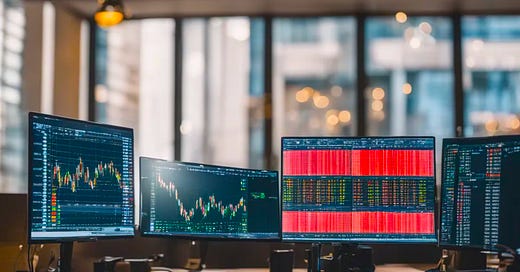11 stock market charts that offer much needed context 📊
Plus a charted review of the macro crosscurrents 🔀

Stocks fell last week, with the S&P 500 shedding 2.4% to close at 4,224.16, the lowest level since June 1. The index is now up 10% year to date, up 18.1% from its October 12, 2022 closing low of 3,577.03, and down 11.9% from its January 3, 2022 record closing high of 4,796.56.
There seems to be a lot on investors’ minds lately. Fortunately, there are als…
Keep reading with a 7-day free trial
Subscribe to 📈 TKer by Sam Ro to keep reading this post and get 7 days of free access to the full post archives.



